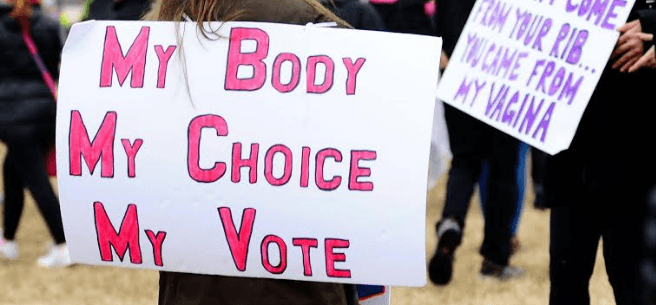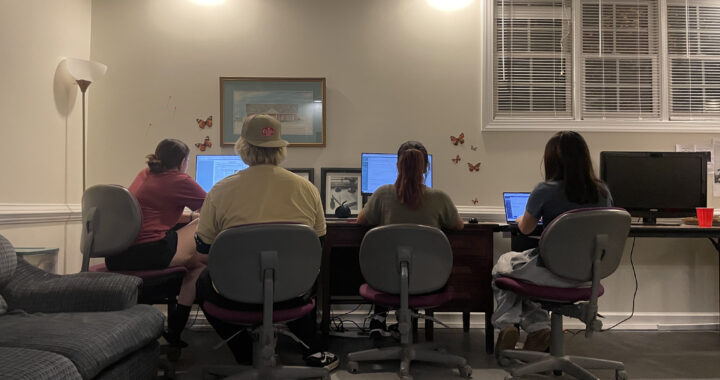The Women’s March disorganized-but momentum must keep going
4 min read
Alex Sakes | The Blue & Gray Press
By SHAWNYA PETERSON
On Jan. 21, I was one of the many people that participated in Women’s Marches across the country and around the world – one of approximately 4.9 million people worldwide, according to the march organizers. I am so proud to have been able to take part in the original march in our nation’s capital the day after the inauguration of our new president.
The march was undoubtedly a powerful show of strength and willingness to fight for our rights as women as well the rights of others. At the same time, I would be remiss if I only talked about the march as a supreme triumph for womankind, when in truth, the march was not quite the emotional, empowering feminist experience that I wanted it to be.
The march’s greatest success was, for me, also one of its greatest downfalls: the massive crowd of people in attendance.
As soon we arrived in D.C., there was nowhere to go that was not packed with people clad in pink knit hats. The sheer number of people filling the streets of D.C. left me too overwhelmed to feel awed. Instead, I found myself waiting for a sense of unity and empowerment that never came.
I believe that the march was well-organized for the number of people they were expecting, but not the number that showed up. At 2:30 p.m., an hour and a half after the official start time, we were still waiting for the speakers to end. A person next to us in the crowd relayed the news that the streets originally planned to make up the route were filled up with people.
There was nowhere for us to march, and after standing for hours listening to speakers, we never actually got the chance to do so. Cold, stiff, tired and hungry, we attempted to march for a while, before getting swept up in a crowd that stretched across city blocks. We instead ended up in a coffee shop near the metro that was filled with pink hats, where we waited in line for 40 minutes to get sandwiches. Right after we left, the store announced that they had run out of food entirely. A friend who attended the march in a separate group told me that the speakers were still going around 4:30 p.m., with no official call to march.
Despite facing initial criticisms for not focusing enough on intersectionality, I believe that the organizers did a good job of stepping out of the mainstream feminist narrative of straight, white, cisgender women to incorporate topics of race, religion, privilege, etc. At the rally preceding the march, we heard from a diverse range of speakers— including Gloria Steinem, Linda Sarsour, trans woman Janet Mock, America Ferrara, Michael Moore, president of Planned Parenthood Cecile Richards and so many more inspirational women. They talked about their triumphs and trials, their individual journeys and how they were shaped by their race, religion and country of origin as well as their gender identity.
Even so, I believe that the people in the crowd—predominantly cisgender white women— could have done a better job of reflecting the message of intersectionality. For example, a photograph taken at the march that went viral in the days following shows a black woman holding a sign with the words “53 percent of White Women Voted for Trump.” She is looking coolly at the crowd around her, which is made up entirely of white women in pink hats. This brings me to my next critique. The pink knit hats that have since become a symbol of the Women’s March, dubbed “Pu**y Hats,” have left me feeling conflicted.
When women have been made to feel ashamed of their bodies from a very young age, bringing our bodies out into a public setting in celebration rather than fear or shame is a radical act. Additionally, when I think of the simple fact that one person’s idea to make hats for the march could blossom into something so recognizable and widespread throughout the participants, I can’t help but feel a little glimmer of pride.
At the same time, the message cannot end there or else the message you are projecting is vagina = woman, and vice versa. One of the things I noticed was that so many of the messages present in the protest signs were vagina- centric (ex: “Pu**y Power” and “Viva la Vulva”) with no mentions of supporting trans women, or trans men with female genitalia.
Despite my feelings of disappointment, I am very happy to have gone, and I am so grateful for the experience and the potential to make history.
In my opinion, the most important part of the march is not the march itself, it is what comes after. On Jan. 21, 2017, nearly five million people across the world came together in support of women’s rights. What we all have to understand is that the fight does not end after we go home. We have to continue to fight by calling our representatives, staying tuned in to current events and resisting the actions of a hostile administration and willing constituency.
We must be willing to support each of our sisters of different races, religions, socioeconomic backgrounds and sexual orientations—for until then, we will never know true unity. If all five million of us are able to see past our differences to strengthen each other and commit ourselves to long-term change, then maybe we can be a force for good over the next four years – not just for the United States, but also for the world at large.











